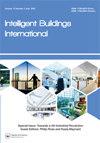Neighbourhood permeability and burglary: a case study of a city in China
IF 1.7
Q2 CONSTRUCTION & BUILDING TECHNOLOGY
引用次数: 0
Abstract
ABSTRACT Much research from different fields has explored the crime-space relationship for different crime types with various study units. However, empirical studies in the diverse urban environments get conflict results that support the two contrary planning paradigms, ‘open’ and ‘closed’ solutions. Through a case study in one prosperous city in China, this research tries to detect the relationship between neighbourhood permeability and the burglary distribution pattern with the study unit of neighbourhood committees. This study focuses on three types of permeability, namely socio-economic, physical, and spatial ones. Our findings show that neighbourhoods with generally lower physical or spatial permeability allowing fewer people to enter or pass by are associate with burglary clustering. Socio-economic barriers offer a positive impact on burglary prevention. Nevertheless, the relationship between permeability and crime distribution is not geographically uniform over the whole city. A suggestion for future research is outlined in the conclusion.邻里渗透与入室盗窃——以中国某城市为例
来自不同领域的大量研究探索了不同研究单位对不同犯罪类型的犯罪空间关系。然而,在不同的城市环境中进行的实证研究得到了支持“开放”和“封闭”两种相反规划范式的冲突结果。通过对中国某繁华城市的个案研究,本研究试图以居委会为研究单位,探究邻里渗透性与入室盗窃分布模式之间的关系。本研究关注三种类型的渗透性,即社会经济渗透性、物理渗透性和空间渗透性。我们的研究结果表明,通常物理或空间渗透率较低、允许较少人进入或经过的街区与入室盗窃集群有关。社会经济障碍对防止入室盗窃有积极影响。然而,渗透性和犯罪分布之间的关系在整个城市的地理位置上并不一致。结论中概述了对未来研究的建议。
本文章由计算机程序翻译,如有差异,请以英文原文为准。
求助全文
约1分钟内获得全文
求助全文
来源期刊

Intelligent Buildings International
CONSTRUCTION & BUILDING TECHNOLOGY-
CiteScore
4.60
自引率
4.30%
发文量
8
 求助内容:
求助内容: 应助结果提醒方式:
应助结果提醒方式:


